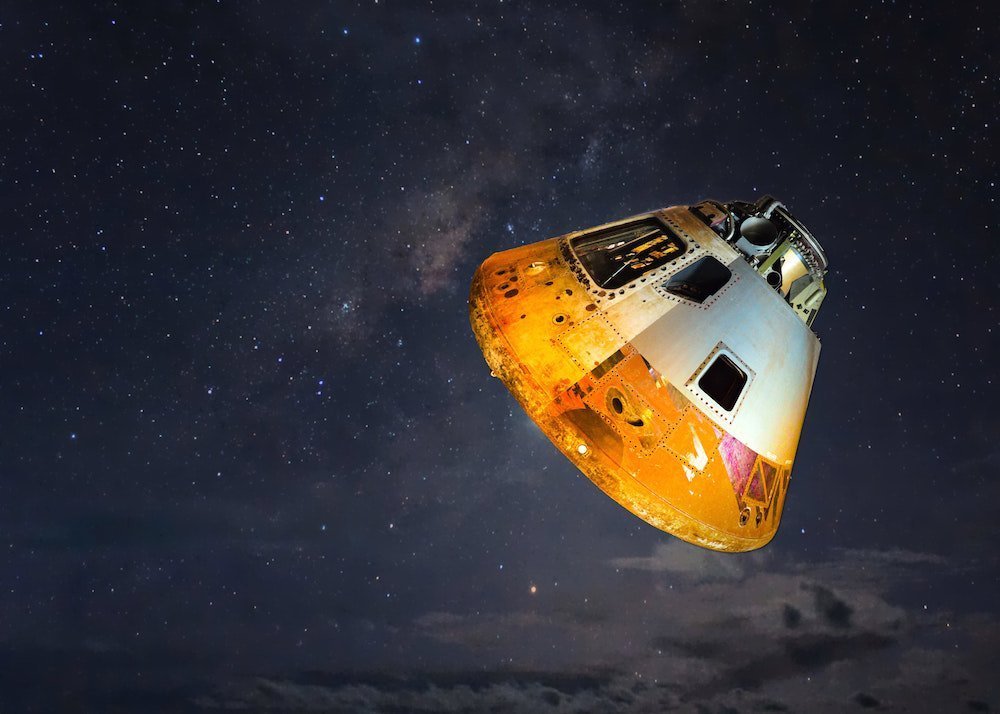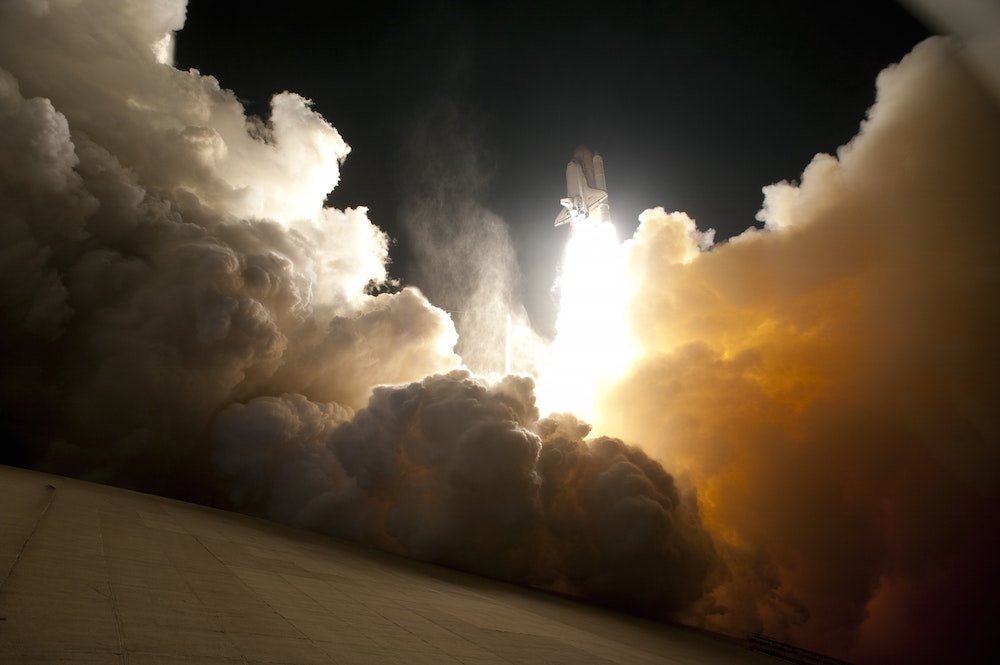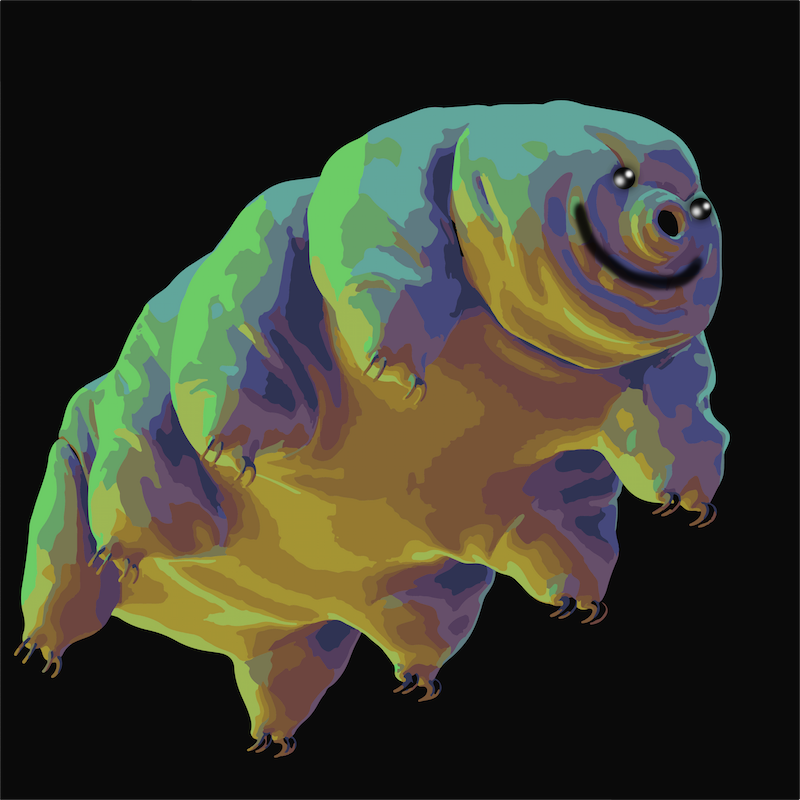The powdery, glowing surface of the moon was littered with the microscopic bodies of tardigrades. Like lice on the skull of a giant Brit judge.
“Where did the rocket go?” asked the program director, sweating over a blank black screen.
The technician punched a key but nothing booted up. “It’s gone,” he said. “We’ve lost it.”
Everyone in the room was silent as the director thought about what to do, how to spin it. The vibes were sharp and stiff, so I inched back slowly. Press isn’t usually smiled upon during events where blame must be stamped on someone’s forehead.
Neither the director nor I knew right then that thousands of tardigrades—the immortal little bugs some call “water bears”—were shaking the dust off, waking up after their crash landing. They had spilled across the moon’s surface, and they were waking up.
This glorious space mission was supposed to utilize the Beresheet lunar lander to deliver a DVD-sized archive filled with things like human-DNA and dehydrated tardigrades to the moon. I was sent out to cover Nova Spivack, the founder of Arch Mission Foundation, who was, in turn, sending out Beresheet in order to create a “backup planet Earth.” But, when the crash occurred, just before midnight on that April 11, I started to think more about the mission’s goals. There in that whirring computer-lined room, my eyes widened. Just what sort of back up planet would be created from revived tardigrades and human DNA anyway? What sort of Lazarus was up there now?
 Spivack’s company, Israel Aerospace Industries, had long been ambitious and creative. I was initially excited to cover such a story, before this day when the blazing-bright mission control center in Yehud Israel, across the sea from us in California, had done something horribly wrong.
Spivack’s company, Israel Aerospace Industries, had long been ambitious and creative. I was initially excited to cover such a story, before this day when the blazing-bright mission control center in Yehud Israel, across the sea from us in California, had done something horribly wrong.
I peaked out from my notepad. Sitting watching Spivack, there in California, as he communicated with the program director who communicated with mission control in Yehud, I closely monitored his face. I watched him and sketched the lines above his brows as they creased up. I thought about men like him and about exploration.
Powerful men like Spivack, Bezos, and the Starchild Musk, had all now turned their monstrously ambitious eyes towards space. They used their power to send rockets up in hopes of finding perfect new patches for profitable suburb-a-vats. Places we could again thrive and buy even more of their shit. But this failed mission, here on April 11, showed me that maybe the things they were sticking inside these rockets were a bit more vile than we’d imagined. I pictured slithering wet things inside the black hulls, waiting to be released onto fresh new worlds.
As I was being dragged out by security, I remembered something. The DVD-sized archive also had included an additional item: the bulk of human knowledge.
 Hurling this load into space had required great technology. For this, Spivack had tapped Bruce Ha, a scientist who developed a technique for engraving high-resolution, nano-scale images into nickel. Some said he was a madman. He proved them wrong when he used lasers to scratch images into glass, then deposited the nickel, by the atom, onto a top layer. Spivak and Ha, who glared at me then, had also sent these holographic images engraved into nickel that would be used, one day, by the immortal tardigrades. They sure had the time to learn how to view them.
Hurling this load into space had required great technology. For this, Spivack had tapped Bruce Ha, a scientist who developed a technique for engraving high-resolution, nano-scale images into nickel. Some said he was a madman. He proved them wrong when he used lasers to scratch images into glass, then deposited the nickel, by the atom, onto a top layer. Spivak and Ha, who glared at me then, had also sent these holographic images engraved into nickel that would be used, one day, by the immortal tardigrades. They sure had the time to learn how to view them.
When the security officer finally got me out the doors, I thought about this looking back at the compound. The lost tardigrades were surely continuing to wake up. They would have every technology and piece of information available on that quiet secluded paradise.
The takeaway?
The powerful are not sending people into space, but mutant payloads. It begs the question: do they truly not want us to leave Earth at all? Is their true goal to bring whatever they are trying to spawn out on the desolate dark sides of planets, back down here, when the spawns have incubated and become strong enough? I imagine streets lined with armed tardigrade human hybrids. Invincible enforcers. Bio rifles in their hands, ordering the masses to plug back in and finish purchasing in Amazon’s online reality-mart.










